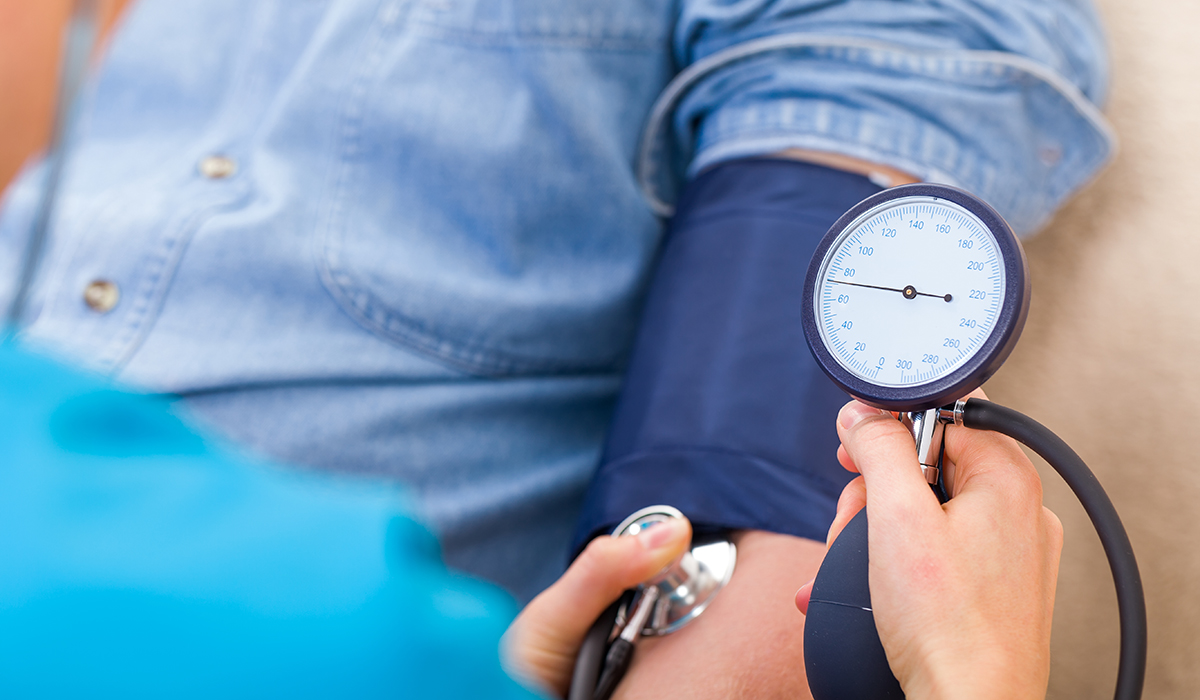February 2020
Getting your blood pressure under control is one of the most important things you can do for your heart and your health.
As your heart beats, it pumps oxygenated blood throughout your body, sending it through blood vessels known as arteries. As the blood travels, it pushes against the artery walls, creating the force known as blood pressure. This force is necessary for blood circulation.
Sometimes, though, this pressure can be too high or too low, causing a domino effect on your health. According to the American Heart Association, maintaining normal blood pressure can reduce your risk of heart disease, heart attack, stroke and kidney disease.
Measuring blood pressure
The only way to know your blood pressure is to get it measured. Devices that measure blood pressure consist of an inflatable cuff, to squeeze and release the artery, attached to a mechanical or digital device that measures the pressure.
A nurse in your doctor’s office can measure your blood pressure during routine visits. You can also measure it at home using a home blood pressure monitor. Your local Good Neighbor Pharmacy may also offer free blood pressure readings.
Two important numbers make up your blood pressure reading:
Systolic pressure. This is the force exerted against the walls of your blood vessels each time the lower two chambers of your heart contract and your heart beats. On a blood pressure reading, this is the first, or top, number.
Diastolic pressure. This is the force on your blood vessels when your heart relaxes between beats. On a blood pressure reading, this is the second, or bottom, number. The unit of measurement is given in millimeters of mercury or mmHg. For example, if a blood pressure reading is 120/80 mmHg, it’s read as “120 over 80.” The 120 is the systolic pressure and the 80 is the diastolic pressure.
What the numbers mean
Readings for your systolic and diastolic pressure, may indicate your blood pressure is normal or elevated (pre-hypertension) — or it may indicate hypertension or even a hypertensive crisis.
Here’s what blood pressure readings mean for you:
Normal: Systolic less than 120 and diastolic less than 80.
Elevated: Systolic between 120-129 and diastolic less than 80.
Stage 1 Hypertension: Systolic between 130-139 or diastolic between 80-89.
Stage 2 Hypertension: Systolic at least 140 or diastolic at least 90.
Hypertensive crisis: Systolic over 180 and/or diastolic over 120. Patients in hypertensive crisis require immediate medical attention, including prompt changes in medication, if there are no other indications of problems, or immediate hospitalization if there are signs of organ damage.
The dangers of high blood pressure
Blood pressure affects the health of your arteries, which in turn affects the health of your heart. Healthy arteries are elastic, stretching to allow blood to flow through. When the force is too high, it can stress your arteries, causing them to develop scars or weak spots, which can increase plaque build up and your risk of developing blood clots. That’s why high blood pressure increases your risk of heart attack and stroke, two of the leading causes of death in the U.S.
Based on the revised guidelines, the American Heart Association estimates 46 percent of all U.S. adults, some 103 million people, have high blood pressure. In addition, about four percent of youth ages 12 to 19 also have hypertension, according to the Centers for Disease Control and Prevention.
Controlling high blood pressure
Healthy lifestyle choices should be part of any strategy to control high blood pressure. Changes to healthier choices can prevent or delay the development of high blood pressure and can improve the effectiveness of medicines used to lower blood pressure.
- Follow the DASH diet. Limit sugar and saturated fats, and focus on eating fruits, vegetables, whole grains, beans, nuts, fish, poultry, and low-fat dairy.
- Get regular physical exercise. The American Heart Association suggests at least 30 minutes of exercise daily.
- Maintain a healthy weight. Obesity can increase your blood pressure.
- Quit smoking.
- Limit alcohol intake.
Even with these lifestyle changes, you may need to take a prescription medication to lower your blood pressure. To keep your blood pressure under control, it’s important to take your medications as prescribed. Ask your pharmacist for more information.



